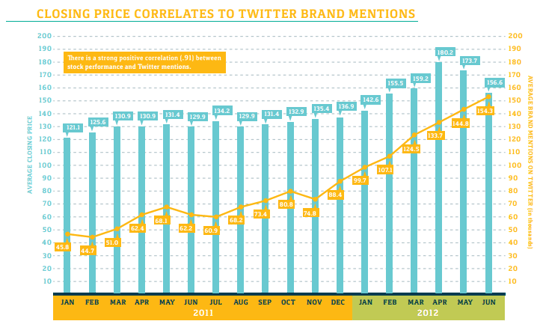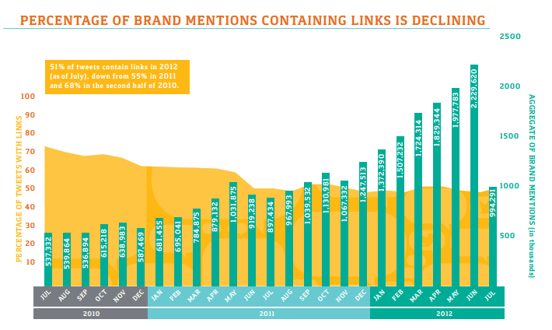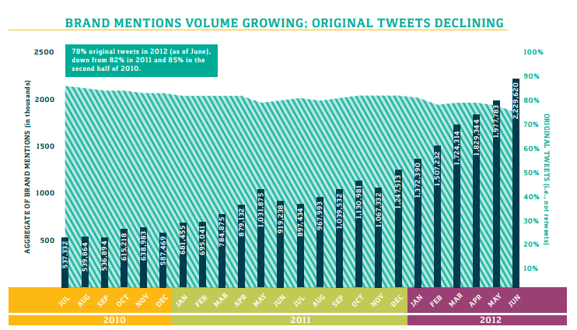The Twitter Influence in Focus

It is no secret that Twitter influences brand-related conversations on the Web, but a new Bazaarvoice study is shedding light on how this chatter can be used to help marketers drive their business.
The Conversation Index Volume 5 takes a look at how consumers use Twitter to talk about brands as well as analyzes social's connections to both routine and major events. The report is based on an analysis of 26 million tweets, each of which mentioned at least one of 13 brands from the BrandZ Global 100 Brands list, including Adidas, Clinique, Colgate, Gillette, Hugo Boss, Nike, Pampers, Pepsi, Ralph Lauren, Samsung, Intel, Tesco and Sony. Then, this data was compared with more than 8,000 TV and radio mentions, 17 months of stock price data, more than a year-and-a-half of Google search data and 270,000 pieces of consumer-generated content from online reviews.
The study's findings show that tweet patterns tend to correlate with stock performance. In fact, a high Twitter volume tends to accompany a high closing price, which implies that the same triggers that make stocks move upward also lead to increased social chatter. Additional insights found that product reviews tend to mention prices more often when consumer confidence is low, which makes it no surprise that price mentions also tend to fall as the Dow Industrial Average rises.

The report also found that Twitter is used differently than other channels because users tend to reveal personal interactions with brands. For example, the report compared search terms that include "Adidas" to mentions of "Adidas" on Twitter, and found that top Adidas search terms tend to be at the level of product lines and categories rather than specific items, while people on Twitter were more likely to mention what "new" products they're wearing, and use words such as "my" and "I." Some of the other top Twitter terms associated with Adidas referenced specific campaigns, including the hashtag #branch309adidasday. This information is important because by analyzing text within tweets, businesses can identify brand advocates as well as monitor consumer responses to news, events and campaigns.
However, one of the most interesting data points from the study found that the proportion of brand-oriented Tweets that include a link is decreasing - from 68 percent in 2010 and 55 percent in 2011 to 51 percent in the first half of 2012. This indicates that consumers are progressively talking about brands instead of just pointing to items that they bought or want to buy with a link.

While content about brands on Twitter is becoming more conversational, the Bazaarvoice report shows that less of the conversation is actually about the brand. In fact, the study found that original tweets about brands are declining, while retweeted brand mentions are on the rise. In fact, the proportion of original tweets with brand mentions has fallen from 85 percent in 2010 to 82 percent in 2011 and 78 percent to this point in 2012. In order to maintain and improve brand-oriented Twitter conversations, businesses should analyze their social data to discover which tweets are generating positive conversations, so that they can emulate these tweets and optimize future content.

"Social data offers a critical new stream of insights for brands and the industry. The social ecosystem is broad; conversations happen on brand sites and on social channels, across an ever-increasing set of devices," said Erin Nelson, CMO of Bazaarvoice. "As social content and data expands, so does the scope of our knowledge about how it both influences and mirrors activity across the digital and physical worlds. Sharing these insights with our clients and the industry is the driving force behind The Conversation Index."

Subscribe to Our Newsletter!
Latest in Social Media










